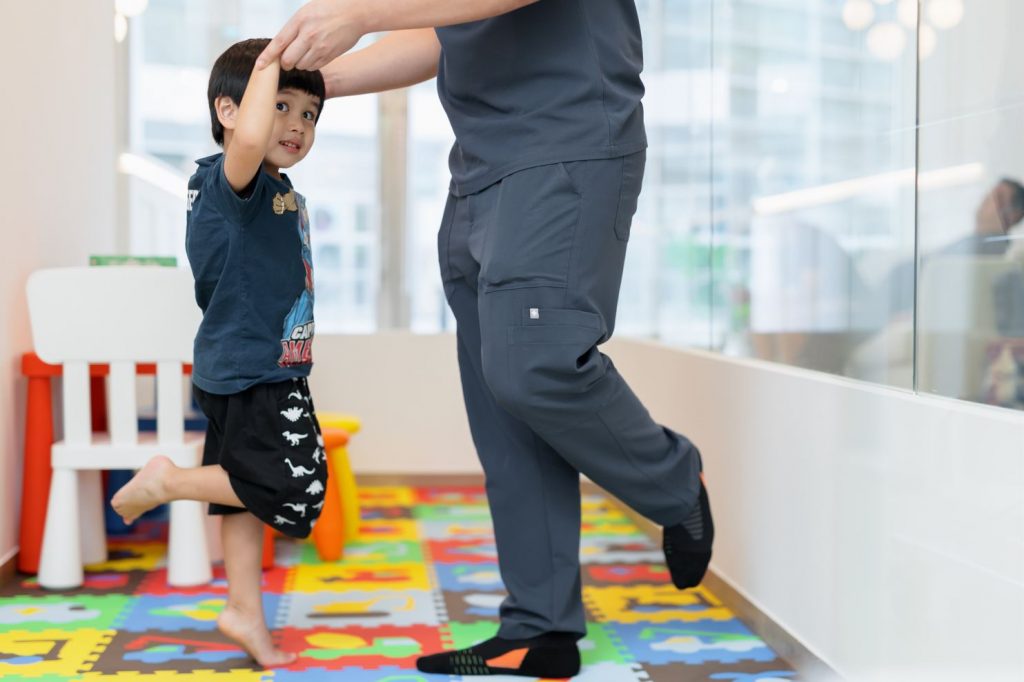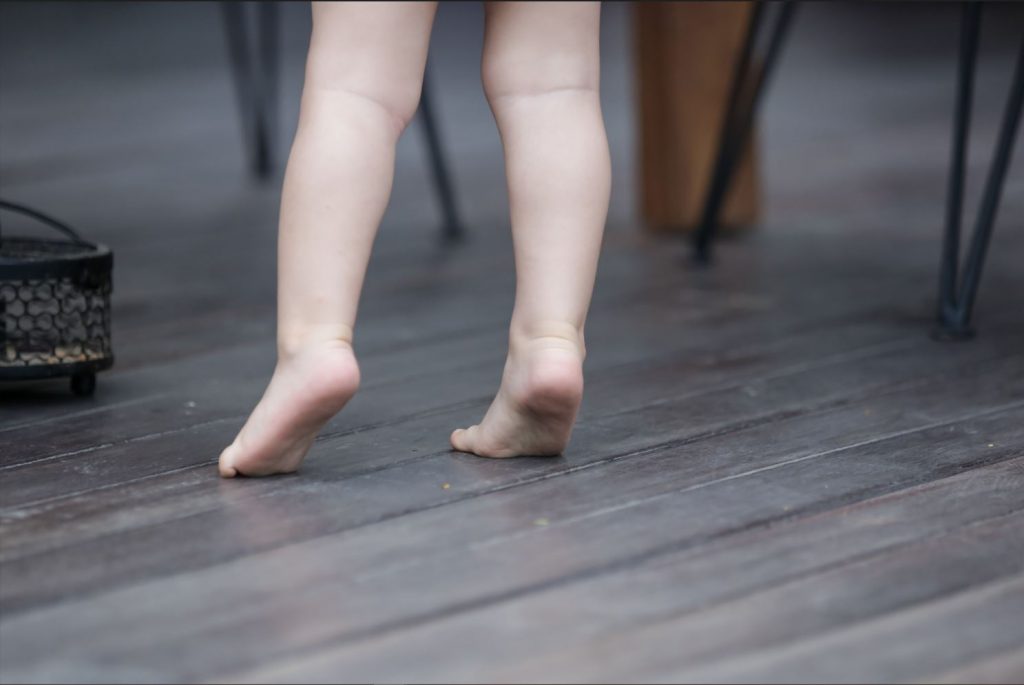What is Toe Walking?
Toe walking, commonly referred to as “walking on tippy toes” by parents, is a condition to describe children who walk without heels touching the ground. Toe walking is a form of gait disorder associated with several underlying neurological or muscular conditions, such as cerebral palsy, muscular dystrophy, and autism. If left untreated, toe walking can lead to other injuries and conditions to the lower limb.
How Common is Toe Walking?
Toe walking is estimated to affect 5 in every 100 children with no underlying conditions, 2 in every 10 children with autism spectrum disorder, and up to 4 in 10 children with underlying neuromuscular conditions. Toe walking, if within the normal development phase, can be considered normal and may resolve with proper medical guidance and supervision. Most children will develop a normal heel-to-toe gait pattern around the age of 2 onwards.

Need Help? See A Podiatrist Today
Types of Toe Walking
Toe walking is classified into 3 different types, namely developmental toe walking, idiopathic toe walking or associated with underlying conditions. A trained Podiatrist will be able to differentiate the types of toe walking conditions, and this is the key to providing the correct form of management.
Developmental Toe Walking (DTW)
- Children with DTW have no underlying conditions and toe walking is just an unusual presentation of their normal development
- Such cases should resolve by around the age of 3 onwards
Idiopathic Toe Walking (ITW)
- Children with ITW have no apparent underlying cause
- Are not associated with any neurological or muscular disorders
- Commonly have a strong family history of toe walking
Toe Walking associated with Underlying Conditions
- Common conditions associated with toe walking include autism, cerebral palsy, muscular dystrophy, or clubfoot
- Signs of toe walking could be an early indicator of the above conditions
- Early detection through thorough assessment is crucial
Causes of Toe Walking
Causes of Toe Walking include:
- Neurological disorder (e.g autism)
- Neuromuscular disorder (e.g cerebral palsy, muscular dystrophy)
- Congenital foot ankle and deformity (e.g clubfoot)
- Muscular spasticity
- Achilles tendon contracture
- Sensory integration disorder (e.g sensitive to certain textiles
- Developmental delay
- Hypermobility of the foot and ankle joints
Signs and Symptoms of Toe Walking
Toe walking is a visible gait disorder and children with the condition will walk on their tippy toes.
Other signs and symptoms include:
- “Bouncing” gait pattern
- Walk on tippy toes when the child is excited
- Walk on tippy toes on certain floor surfaces (e.g carpet, beach)
Toe Walking Treatment in Singapore
- Supramalleolar orthoses
- Ankle-Foot orthoses
- Customised foot orthoses
- Gait retraining program
- Stretching and strengthening Exercises
- Advanced therapies, such as radial pressure wave therapy for releasing muscular tension
If you suspect your child is toe walking, we highly recommend seeking a medical professional early for help.
Share this with someone you know





